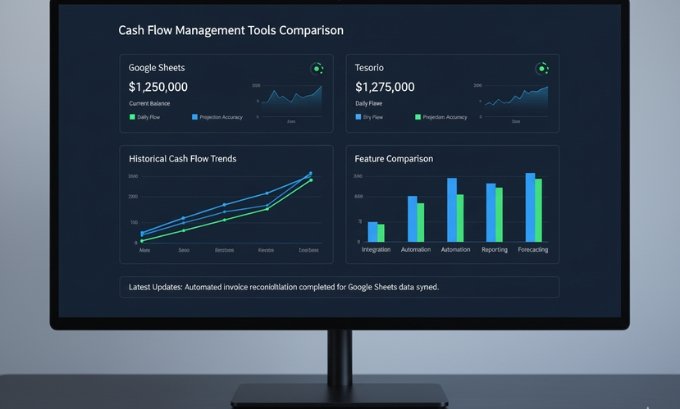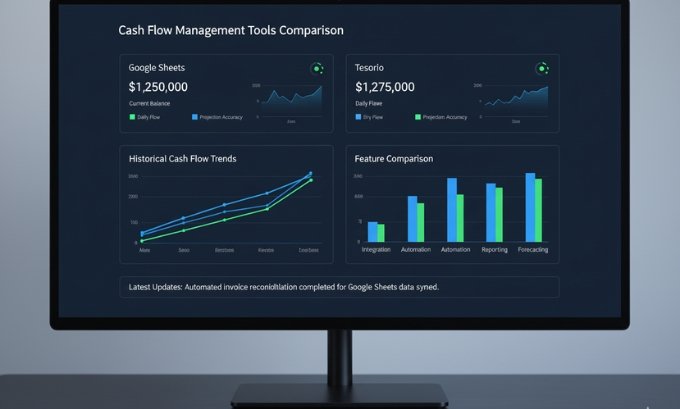Many entrepreneurs quickly learn that showing profit on paper isn’t enough—healthy cash flow is what really keeps the doors open. Knowing how to manage cash flow in a small business is crucial, not just for survival but for growth and stability. If you find yourself struggling to cover regular bills or sudden expenses, you’re far from alone. This practical guide explores proven ways to take control of your business finances and build a more secure future.
If you want more expert perspectives or case studies, visit Mind Journal for small business ideas and guidance. Exploring additional resources can give you a fresh take on business planning and daily operations.
Table of Contents
Understanding the Basics of Cash Flow Management
At its core, cash flow management is about tracking, analyzing, and optimizing the way money moves through your business. The goal is simple: make sure there’s always enough cash on hand to cover essentials like payroll, inventory, and rent. Even in the digital era, many businesses overlook the value of cash flow until a shortfall creates chaos.

Think of it like organizing your home finances—the difference is in the scale and stakes. For business owners, inflows could be sales or investments, while outflows might include marketing expenses, inventory systems, or supplier payments. Tools like a cash flow statement can help you keep tabs on these flows at a glance.
Maintaining positive cash flow—having more income than expenses—is often a stronger indicator of health than looking at profits alone. Extended periods of negative cash flow are a warning, even if your P&L is impressive.
Why Mastering Cash Flow is Essential
Smart cash flow management is as much about mindset as math.
- Predict Shortfalls: By setting clear financial goals, you can spot trouble ahead and avoid crisis.
- Ease Financial Stress: Using digital transformation strategies delivers real-time clarity and calmer decision-making.
- Support Smart Growth: When you know your numbers, you can plan expansion or test new business ideas without risk of overreaching.
- Win Lender & Supplier Trust: Reliable cash flow forecasts build confidence with partners and support stronger negotiations.
- Make Better Decisions: React with facts, not guesses. Regular review of your financial health sharpens your planning.
For a deeper dive into these topics, you can read more at this comprehensive business resource. The site provides practical case studies and additional strategies to reinforce your understanding of cash flow.
A Real-Life Scenario: Facing a Cash Flow Crunch
In my first venture, every sale felt like a win—until a vendor bill and looming payroll created panic. Although I had profits, delayed customer payments and prompt bills created a cash gap. To fix this, I started using forecast spreadsheets and tools like Google Sheets to map out anticipated expenses and income. Over time, I improved inventory control and slowly built an emergency fund.
10 Actionable Strategies for Better Cash Flow

Learning to manage cash flow in a small business requires process, not perfection.
1. Master Cash Flow Forecasting
A good forecasting template will help you predict inflow and outflow across weeks or months. Review these often and update for accuracy.
2. Strengthen Inventory Control
Excess inventory ties up much-needed cash. Use techniques like ABC analysis or warehouse management software to focus on what sells and move out slow lifters.
3. Lease Instead of Buy
Preserve working capital by leasing equipment instead of buying outright. Leases can also offer tax perks and smaller monthly outlays.
4. Invoice and Collect Promptly
Invoice as soon as work is delivered and send automated reminders for late payments. Tools found in digital marketing and business resources can make this easier.
5. Explore Alternative Revenue Streams
Adding new services or products diversifies your income and cushions against dips in your main line of business. For more inspiration, explore small business ideas.
6. Negotiate Supplier and Financier Terms
Ask your suppliers for extended payment windows, especially if you have a solid relationship. Negotiation tips and partner strategies can improve your leverage and cash buffer.
7. Open a High-Interest Savings Account
Keep your emergency fund separate and earning interest while remaining easily accessible for true emergencies.
8. Regularly Review and Adjust
Regular reviews—involving modern dashboards like Jirav or Tesorio—will help you adapt quickly to changes or challenges.
For more resources about business finances and daily management, you may visit this business guide, which offers actionable steps, templates, and industry insights tailored for entrepreneurs and business owners.
Cash Flow Management Tools: Quick Comparison
| Tool | Best For | Key Features | Pricing |
|---|---|---|---|
| Google Sheets | Startups and small teams | Free, customizable, straightforward for beginners | Free |
| Shopify Balance | Shopify merchants | Integrated payouts, automated tracking, no fees | Free for users |
| Tesorio | Growing businesses | Real-time dashboards, automation, analytics | Custom |
| Jirav | Medium/large businesses | Modeling, KPI tracking, scenario planning | Subscription-based |

Strengths
- Customizable tools make learning accessible.
- Integrations and automation reduce daily administrative hassle.
- Real-time data means you can spot issues and adapt early.
Areas for Improvement
- Manual solutions can introduce errors as volume grows.
- Some platforms come with a learning curve or fees—assess what fits your business best before committing.

Frequently Asked Questions (FAQ)
1. What’s the difference between cash flow and profit?
Profit is what remains after expenses; cash flow is about when the money actually arrives and leaves. A business can be profitable but run out of money if timing is mismatched.
2. What should a cash flow management plan cover?
Your plan should address forecasting, regular monitoring, and safeguarding reserves to keep the business on track through ups and downs.
3. How often should cash flow forecasts be updated?
Aim for weekly updates unless your business model requires more frequent (or less frequent) reviews.
4. What are the main tasks in effective cash flow management?
Regular forecasting, reviewing account statements, managing inflow/outflow, and using modern software solutions.
5. Can negative cash flow ever be OK?
Occasional shortfalls after big investments can be managed, but repeated deficits warrant a new strategy.
6. What is a strong example of good practices?
A business that sends quick invoices, uses automation, and keeps cash set aside for taxes is demonstrating best-in-class management.
7. Where should you start?
Begin with a reliable forecasting template or digital tool and build your routine from there.
Conclusion: Build Your Financial Confidence
Mastering how to manage cash flow in a small business gives you more freedom and confidence to pursue new markets, weather tough patches, and grow with less risk. Start today with one habit—a forecasting review or an inventory tweak—and build from there for lasting financial health.
Meta Description: Practical strategies to manage cash flow in a small business—with tools, tips, and resources for healthy, steady financial growth.
Author Bio & References
John Miller is a small business consultant and experienced financial writer. He draws advice from hands-on consulting as well as respected resources like Mind Journal, Link Luminous, and GoGoNihon to help entrepreneurs build better business practices.

